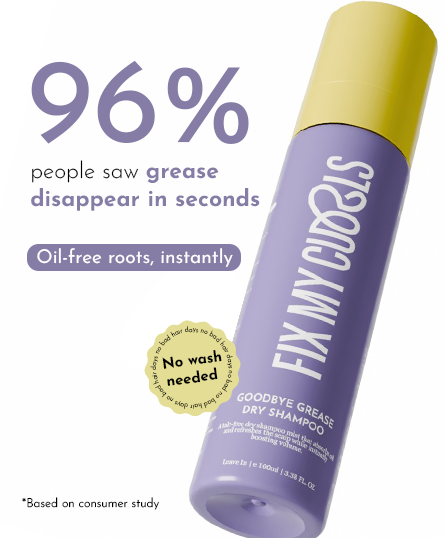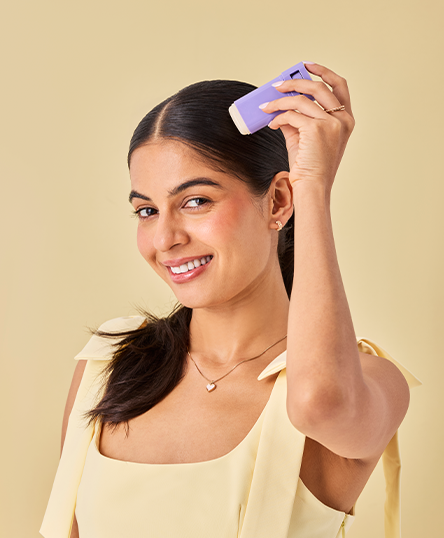Why Your Scalp is Breaking Out This Monsoon (And How to Calm It Down)


The monsoon brings with it the joy of cloudy skies, cooler breezes, and that familiar earthy scent after a downpour. But if you’re part of the curly-haired crew, it also comes with something far less poetic—scalp breakouts.
We’re talking about tiny red bumps, itchiness that just won’t quit, and a greasy, heavy feeling at the roots even after a wash. It's frustrating. It's uncomfortable. And worst of all, it often feels like no product or trick really fixes it.
So what's going on? Why does your scalp revolt just when your curls start to bounce with all that added moisture in the air? And how can a proper scalp care routine for curly hair save your sanity?
Let's see what's going on underneath your locks—because odds are, your scalp is just begging for help in the most melodramatic monsoon-esque manner possible.
What’s Actually Behind the Monsoon Scalp Breakout?
The unexpected dampness, capricious rain, and overall rise in moisture not only influence how your curls appear—they actually have a direct influence on your scalp's well-being. Here's what's probably responsible for the mayhem:
1. Humidity Triggers Overactive Sebaceous Glands
When there is humidity, your scalp will also secrete more sebum (natural oils). And since curly hair is denser and multi-layered, this oil never dries out or travels down the hair shaft. It becomes stuck at the scalp, creating a breeding ground for bacteria and inflammation or breakouts.
2. Your Hair Holds on to Water Too Long
Curly hair isn’t just about the spiral—it’s about porosity. The more porous your curls, the longer they hold moisture. So if you tie your hair up when it’s even a little damp (which is so tempting during monsoon), you’re essentially creating a warm, moist pocket on your scalp. Hello, fungal acne!
3. Rainwater Isn’t as Innocent as It Looks
Rain dances are lovely, but rainwater, particularly in urban areas, contains pollutants, heavy metals, and dirt. These contaminants can settle on your scalp, disrupt your pH, and result in a nasty, itchy, inflamed situation you can't scratch your way out of.
4. Your Hair Products May Be Doing More Harm Than Good
The monsoon often means doubling down on leave-ins, gels, and butters to fight frizz. But if you’re not cleansing properly—or using products with heavy buildup—these formulas cling to your roots, block your follicles, and trigger those dreaded breakouts.
5. Your Wash Routine Might Be Out of Whack
Washing too often strips your scalp. Not washing enough? Traps dirt, sweat, and excess oil. Either way, your scalp protests. It is all about finding the right balance, particularly when the weather is against you.
What Scalp Breakouts Appear Like (and Why You Could Be Missing the Warning Signs)
It's sometimes apparent—pimples on the scalp, flaking, or chronic itching. But other times, the symptoms sneak up in less noticeable ways:
-
A greasy crown even hours after a wash
-
A weird smell when you scratch your scalp
-
Itchiness only at the nape or behind the ears
-
Curls that feel limp or weighed down near the roots
-
Tiny, hard bumps that feel sore to the touch
If this sounds familiar, your scalp needs help—and fast.
Your Monsoon-Safe Scalp Care Routine
Let’s shift focus to the solution. A consistent, gentle, and hydrating routine is key. Here's how to bring your scalp back to balance with care that’s curated for curly heads like yours.
1. Clarify Without Stripping
You don’t need harsh shampoos to clean your scalp. You need a sulfate-free formula that gently removes dirt and product residue while respecting your scalp’s pH.
Use: Fix My Curls Everyday Moisturizing Shampoo
It clears buildup and soothes the scalp without drying out your curls. Perfect for 2 to 3 applications per week, depending on how oily or active your scalp is.
2. Pre-Wash with a Healing Oil Blend
Scalp oiling isn’t just an old-school practice. Done right, it reduces inflammation, detoxes the roots, and improves circulation.
Try: Fix My Curls Scalp and Strands Elixir Hair Oil
A blend of peppermint, tea tree, and rosemary oils—it clears clogged follicles and refreshes the scalp.
3. Mask the Right Way
Yes, your scalp loves a good mask too! Deep conditioners don't merely hydrate curls—they rebalance the entire ecosystem from root to tip.
Alternate Weekly Between:
-
Fix My Curls Moisture Melt Deep Conditioning Hair Mask
-
Fix My Curls Protein Powered Deep Conditioning Hair Mask
This keeps both scalp and strands nourished and resilient.
4. Conditioning Is Not Optional
Each wash should be followed with a scalp-friendly conditioner that locks in moisture without clogging pores.
Use: Fix My Curls Hydrating Deep Conditioner
It hydrates the scalp and tames frizz in one go. Rinse thoroughly and avoid applying too close to the roots if you’re prone to breakouts on the scalp.
5. Leave-Ins That Don't Suffocate
Try a light-weight leave-in product that will not build up or look greasy on the roots.
Go For: Fix My Curls Leave In Cream
It's lightweight and moisturising and offers the best base layer to style with, without suffocating your scalp.
6. Style Smartly with Focus on the Ends
Your styling butters and creams are meant for the lengths, not your roots.
Choose: Fix My Curls Curl Quenching Hair Butter
Apply it on the mid-lengths and ends to lock in moisture and keep your scalp clear of residue.
7. Let Your Scalp Breathe—Literally
-
Don’t tie up wet hair
-
Don’t overload roots with product
-
Use a microfibre towel or a diffuser to dry the roots
-
Let your scalp see daylight (open styles help)!
The Long-Term Solution: A Consistent Routine
Here’s a simplified weekly structure to help you stay on track with your scalp care routine for curly hair:
|
Day |
Care Focus |
|
Sunday |
Oil treatment + wash + protein mask |
|
Tuesday |
Refresh wash + light conditioner |
|
Thursday |
Wash + moisture mask |
|
Daily |
Use Leave-In Cream + Hair Butter (ends only) |
Still Seeing Bumps? Other Triggers to Watch
If you’re following the right steps and still struggling, here are a few often-missed culprits:
-
Dirty Satin Pillowcases Or Bonnets
Oils and products can transfer and affect scalp health. Wash them twice a week during the monsoon. -
Hormonal Imbalances Or Stress
Scalp acne can flare with cortisol spikes. Don’t rule this out if breakouts persist. -
Using Hot Water For Washes
Always wash your curls with cold or lukewarm water to stop overproduction of sebum or natural oil.
Your Scalp Can Thrive This Monsoon
No more guesswork. No more bouncing between harsh shampoos and scalp scrubs that just make things worse.
When your routine is focused, gentle, and built specifically for curls, your scalp responds beautifully.
The key? Knowing the distinction between responding to symptoms and curing the root of the issue. Once your scalp is balanced, so too will your curls be—and you'll notice the difference every time you brush your fingers through your hair.
Discover Fix My Curls' line of scalp care products for curly hair, formulated to calm, moisturize, and shield through every raindrop.









